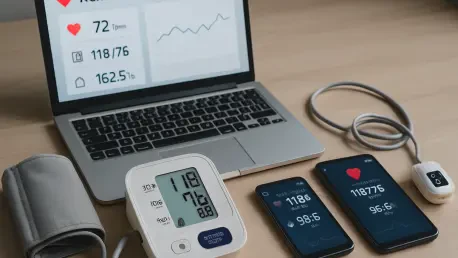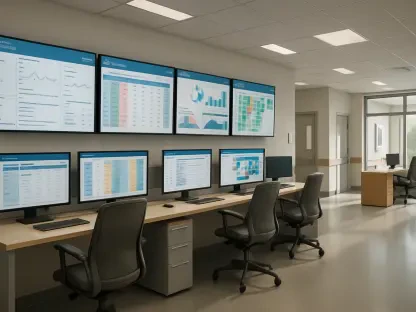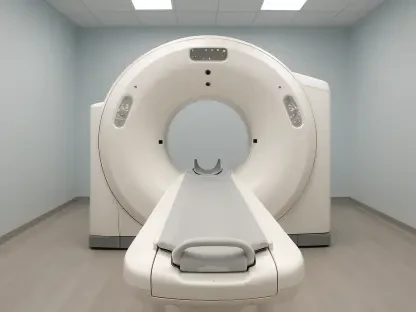In the rapidly shifting landscape of healthcare, Remote Patient Monitoring (RPM) and Chronic Care Management (CCM) programs under Medicare have emerged as potential game-changers for managing chronic conditions and supporting aging populations. These initiatives were designed with a dual purpose: to improve patient health outcomes through continuous oversight and to provide financial reimbursement opportunities for healthcare providers. However, despite the lofty promises, a growing number of voices in the industry suggest that these programs are not delivering as expected. Instead, they appear to be creating significant challenges for both patients and providers, raising questions about their effectiveness. From unused devices to operational burdens, the gap between intention and reality is becoming increasingly apparent. This article delves into the critical shortcomings of current RPM and CCM implementations, examining whether they are truly benefiting stakeholders or simply adding to the complexity of modern healthcare delivery with unforeseen headaches.
Unmet Promises of Technology and Engagement
The vision behind RPM and CCM programs hinges on leveraging technology to keep patients connected to their care teams, but the execution often falls flat. Many patients find themselves with devices that sit idle, often referred to as “dark devices on the counter,” because they fail to inspire active participation or influence healthier behaviors. This lack of engagement is a significant barrier, as the data collected remains underutilized without patient buy-in. For those with chronic conditions, this means missed chances for timely interventions that could prevent complications. The disconnect not only undermines the potential health benefits but also frustrates the very individuals these tools are meant to support. Providers, in turn, struggle to justify the investment in programs that don’t deliver measurable improvements, especially when Medicare ties reimbursements to outcomes. The fundamental issue lies in designing solutions that prioritize user interaction over passive monitoring, a challenge that current offerings have yet to fully address.
Compounding the engagement problem are persistent technological glitches that plague many RPM and CCM systems. Patients frequently encounter issues with mobile apps or Bluetooth connectivity, leading to endless cycles of troubleshooting that sap their patience. Healthcare staff, already stretched thin, often find themselves diverted from clinical duties to act as impromptu tech support, a role far removed from their expertise. This misallocation of resources creates inefficiencies within clinics, where time spent resolving device issues detracts from direct patient care. The frustration is palpable on both sides—patients feel neglected by tools that promise much but deliver little, while providers grapple with complaints that erode trust in the system. Until technology becomes more reliable and user-friendly, the gap between the potential of RPM and CCM programs and their real-world impact will continue to widen, leaving stakeholders questioning the value of these initiatives in transforming healthcare delivery.
Provider Risks and Operational Strains
Beyond technological shortcomings, providers face substantial risks when RPM and CCM programs rely on outsourced support systems. Many programs cut costs by contracting patient care to overseas or remote call centers, where oversight can be inconsistent at best. This setup often results in impersonal interactions that fail to build trust with patients, who may sense a lack of genuine concern or continuity in their care. More alarmingly, such arrangements can expose providers to serious legal liabilities, including potential violations of HIPAA regulations due to inadequate data handling or breaches in privacy. When care feels fragmented or unreliable, the patient-provider relationship suffers, and clinics are left to manage the fallout. This dynamic places an unfair burden on healthcare organizations, which must navigate the consequences of vendor failures while striving to maintain their reputation for quality care in an increasingly competitive landscape.
The operational strain on providers doesn’t end with outsourced care risks; it extends to the broader impact of program failures on daily workflows. When RPM and CCM tools fail to operate seamlessly, clinics are inundated with patient frustrations over malfunctioning devices or unclear instructions. This not only damages the provider’s credibility but also threatens financial stability, as Medicare reimbursements depend on successful implementation and demonstrable health outcomes. Staff burnout becomes a real concern as they juggle these additional responsibilities alongside their primary medical roles. The ripple effect is a vicious cycle—poorly performing programs lead to dissatisfied patients, which in turn increases pressure on providers to compensate for systemic shortcomings. Without significant improvements in vendor accountability and program design, healthcare organizations remain vulnerable to reputational harm and economic losses, casting doubt on whether these initiatives are sustainable in their current form.
Exploring Integrated and Trustworthy Alternatives
Amid the mounting challenges, a shift toward more integrated and high-quality solutions offers a glimmer of hope for RPM and CCM programs. Innovative Virtual Care ecosystems are emerging as potential answers, focusing on continuous patient engagement rather than mere data collection. These platforms aim to foster meaningful interactions through intuitive interfaces that encourage adherence to care plans and provide early detection of health issues. By prioritizing the human element alongside technology, such systems strive to ensure patients feel supported rather than isolated by their devices. For providers, this approach promises reduced administrative burdens through seamless integration with existing systems, allowing clinical focus to remain on patient well-being. The emphasis on creating a cohesive care experience could redefine the effectiveness of Medicare-supported programs, addressing many of the pain points that currently hinder progress in virtual healthcare delivery.
Another critical aspect of these forward-thinking solutions is the commitment to trust and security, which directly tackles the pitfalls of outsourced support. By employing U.S.-based, professionally trained care teams, newer platforms ensure a higher standard of interaction that rebuilds patient confidence. Robust security measures, aligned with stringent industry regulations, further protect sensitive data from breaches that could jeopardize provider credibility. This focus on quality over cost-cutting measures like overseas call centers mitigates legal risks and fosters a sense of reliability for all stakeholders. As the healthcare industry moves toward value-based care models, where reimbursements are tied to tangible outcomes, adopting solutions that emphasize integration, engagement, and trust becomes essential. These alternatives signal a potential turning point, offering a blueprint for how RPM and CCM programs might finally deliver on their transformative promise without adding unnecessary complications.
Building a Better Future for Virtual Care
Reflecting on the struggles faced by RPM and CCM programs, it’s evident that past efforts often stumbled due to a lack of focus on usability and genuine patient connection. Technological hiccups and risky outsourcing practices left both patients and providers disillusioned, as the anticipated benefits of improved health and streamlined care remained elusive. Providers absorbed the brunt of these failures, managing patient dissatisfaction while navigating potential legal pitfalls. Yet, the lessons learned from these early missteps paved the way for a deeper understanding of what virtual care must entail to succeed. The emphasis on patient engagement and reliable support emerged as non-negotiable elements in the quest for effective solutions. Looking ahead, the industry must commit to rigorous standards and innovative approaches that prioritize outcomes over mere implementation. By investing in integrated systems and fostering trust through quality care, the future of RPM and CCM can shift toward a model that truly serves its purpose, ensuring better health for patients and sustainable practices for providers.









